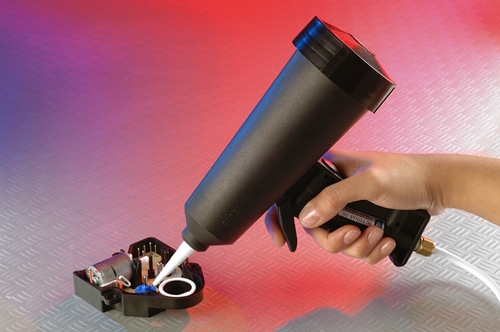

- Contributions by industrial experts with engineers in mind
- Focused on specialty-chemical material applications and selection
Knowledge Center
Lubricants 101

Lubricants 101
Lubricants 101 is your introduction to lubricants, which are integral to the long-term operation of any system with parts that come into contact with each other repeatedly.
In nearly every industry from automotive to manufacturing, lubricants are integral to the long-term operation of any system with parts that come into contact with each other repeatedly. Lubricants are necessary because at a microscopic level friction between two surfaces causes the related stresses of wear and heat. These stresses lead to breakdowns or inefficiencies in systems of all kinds. Lubricants provide a physical barrier between two surfaces that would otherwise be in contact. This barrier reduces friction and can help dissipate heat. That barrier has the added advantage of keeping out dirt, air and moisture - helping to prevent rust, corrosion and contamination.
What are Lubricants?
Lubricants come in a variety of forms, but most liquid or semi-liquid lubricants are formed from a base oil - either petroleum-based mineral oils, synthetic oils or vegetable oils. Additives are combined with these base oils to change the properties as necessary. Dry lubricants like graphite and molybdenum disulfide can be used by themselves or as additives in other lubricants.
"Lubricants can be tailored to the specific applications they are used for."
Lubricants 101: Lubricant Types
Each type of lubricant has specific properties that make it well-suited to particular applications.
- Oil - Oils are the thinnest type of liquid lubricant, with petroleum- or synthetic polyalphaolefin- (PAO) based formulations the most common. Because they are relatively thin liquids, they can be used where dissipating heat is necessary since they can be easily circulated through a system and cooled. Additives can be used to provide extra protection and prolong life of equipment and machinery they are used with. Their viscosity can also be modified by varying molecule chain length - lower viscosity oils are used for high speed applications like compressors, and higher viscosity oils are used for slow speed applications like gear boxes.
- Grease Greases are semisolid materials consisting of a lubricating fluid, thickening agent (typically mineral soap of some kind) and additives. Because they are thicker than oils, they can be used in applications where oils might eventually be cast off like high speeds or exposed surfaces. They can provide extra protection against oxidation and rust, forming a solid air and moisture barrier on coated surfaces.
- (Silicone) Compound Compounds are grease-like materials, but instead of the usual lubricating oils or solids, they are composed of silicone fluids and silica fillers. They have silicone's advantage of high-temperature stability, and can also be used for sealing. They have good dielectric properties, and can be used for non-metal-to-metal lubricating and release applications. Special formulations can also be used for food and beverage applications.
- Paste Pastes or anti-seize compounds are similar to greases, but contain a very high percentage (over 50 percent) of solid lubricants .They can be used in high-load, low-speed applications that would be unsuitable for oils or greases. With pastes, the solid compounds are providing much of the lubrication, so even in high temperature environments where the oil carrier evaporates, a friction reducing solid-lubricant film remains.
- Solid - Solid, dry or powdered lubricants are often components in other lubricating fluids, but can be used directly as well. The most common are graphite or molybdenum disulfide. These lubricants can provide friction-reducing properties in extreme heat, pressure and oxidizing environments where other lubricants would be ineffective or unable to withstand conditions.
- Dispersion Dispersions are simply solid lubricants suspended in lubricating fluids, where application of those solids in liquid form is preferred or necessary, such as mold-release sprays.
- Anti-Friction Coating AF Coatings or "lubricating paints" consist of a fluid carrier, a binder and solid lubricants. When applied, these materials cure to form dry, solid lubricant coatings that are bonded to the surface. They are useful for helping to prevent corrosion, do not attract dust or dirt and can provide a long-lasting, even covering of lubricating film.
Which Lubricant for Which Application?
Determining which lubricant to use for a specific application requires taking into account a number of factors. Using the acronym L.E.T.S. breaks down those factors into four categories.
- Load The amount of force or stress placed on the component or surface. In general, loads can be classified as heavy, moderate or light.
- Environment The operating environment, such as atmospheric pressures, humidity, water immersion, the presence of chemicals, fuels or airborne contaminants.
- Temperature The actual operating temperature, the soak temperature at standstill and the ambient temperature.
- Speed Runs from high to low, and it involves rotational and reciprocating speeds as well as frequency of motion.
Lubricants are available that meet all combinations of these factors and can be tailored to the specific application they will be used for.






